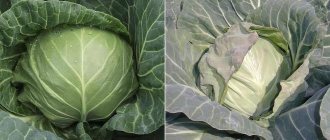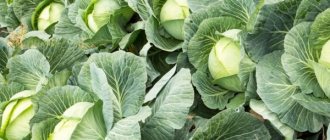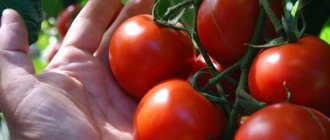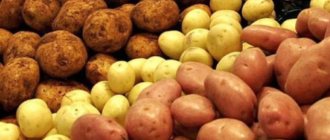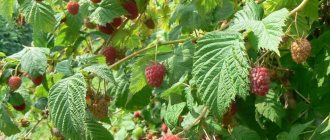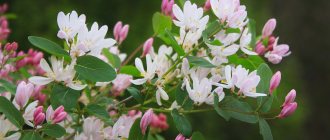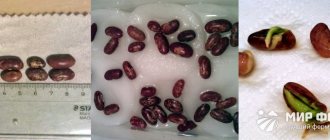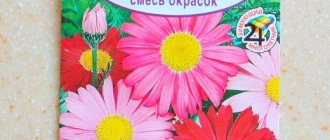To figure out how to get cabbage seeds, you will have to study the botanical description of the plant.
Our usual and beloved vegetable is just an overgrown apical bud in which nutrients are deposited. From where, in the second year, a shoot with peduncles is formed.
The real fruit of cabbage is a pod with 20-26 angular-rounded brown seeds.
Self-collecting cabbage seeds allows vegetable growers to provide themselves with a large amount of high-quality seed material and proven varieties.
Erroneous testis
Sometimes it happens that a plant of this crop in the first vegetative year suddenly takes and releases a shoot with flowers. Those who decide to collect such seeds from cabbage for further planting are usually extremely dissatisfied. The seeds show poor germination, the sprouts are weak, and most do not set heads.
Cabbage is a biennial plant and for normal fruiting it must go through all stages of development.
Therefore, a vegetable grower who decides to get cabbage seeds at home needs to:
- choose the right heads of cabbage;
- dig up queen cells in time and create conditions for vernalization;
- prepare overwintered heads of cabbage for planting;
- prepare the soil and plant stalks in the ground;
- care for the seed plant all season long, hill up, water, tie up and remove excess shoots;
- Collect mature pods in time.
How to grow cabbage seeds yourself
Mid-ripening and late-ripening varieties of cabbage are better suited for obtaining seeds.
Algorithm:
- Select suitable heads of cabbage.
- Ensure optimal storage conditions after removal from the soil.
- Prepare overwintered vegetables for planting.
- Plant the stalks in the ground.
- Provide testis care.
- Collect ripe pods in time.
- Carefully remove the seed.
Landing
The stumps are transferred to the ground at the end of April - beginning of May, depending on the region. A month before, each queen cell is carefully inspected - rotten roots and leaves are removed. The head of cabbage (if the vegetable is left in this form) is cut to form a cone narrowed at the top with a base diameter of up to 20 cm.
15-20 days before planting, the stumps are distributed in stacks in the open air (roots inward). Each layer is generously covered with humus and watered with manure diluted with water. This will ensure the active development of the stumps, but you need to monitor the temperature level so that the roots do not freeze.
Attention! An area where cruciferous crops have not been grown in the previous 3-4 years is suitable for planting.
Fertilize the area in the fall using manure (6 kg per 1 m²). In spring, the plants are fed with potash (10 g/m²) and phosphate fertilizers (20 g/m²), and the area is dug up.
Landing is carried out according to the following algorithm:
- Dig holes at a distance of 50 cm in the row. Row spacing is 70 cm.
- Pour 300 g of humus and 20-25 g of phosphates into each hole. Mix with soil.
- In a separate bowl, prepare a solution of clay and liquid mullein. Dip the root of each stump into the composition before planting.
- Place the plant in a hole at a slight slope, add soil and compact it around the roots. Plant a little deeper than the rooting was in the first year.
- Water the hole and loosen the soil.
If cabbage grows nearby (for example, from neighbors), the risk of cross-pollination is high. Then a piece of gauze is put on each head of cabbage, fixing the stalk at the base.
However, this algorithm for growing queen cells is effective only for late-ripening and mid-late varieties.
To obtain seeds from early varieties, they act differently:
- Cut the stalk from the selected heads, removing even the covering foliage.
- Place the fruits in the cellar for storage.
- In autumn, pour fertilized soil into pots and place stalks. Regularly water with warm water (+20…+22°C), loosen the soil.
- Store in the basement with queen cells of late varieties under the same conditions.
- When planting time approaches (April-May), the crop is transferred to the garden bed along with a lump of earth.
This planting algorithm strengthens the root system of early varieties of queen cells. This has a beneficial effect on crop adaptation and disease resistance after planting. The method is especially suitable for the northern regions of central Russia with long winters.
Care
After planting, the seed plants require special care. If there is a risk of frost in the first week, cover the beds with a layer of straw, which will save heat. During this period, the seedlings will adapt and the insulation can be removed.
Water the plantings regularly as the soil at the base of the stump dries out. The frequency is determined by regional climatic conditions - approximately once every 7-10 days. In hot weather, moisturizing is carried out more often. Water the crop in the evening with settled water heated in the sun. The soil is periodically loosened.
2 weeks after planting, cabbage is fertilized for the first time with mullein solution, consumption - 3 liters per bush. The second fertilizing is applied immediately before the plant blooms. Nitrogen fertilizers (nitrophoska) are suitable, consumption - 25 g per 1 m².
Crop care activities also include:
- Removing old foliage. The leaves with which the plant survived the winter are removed 2 weeks after being transferred to the ground. If you do not carry out the procedure, the plant will rot.
- Garter bushes. When an arrow appears, it is immediately tied to a peg fixed on the ground. This will prevent the stems from breaking.
- Removing unnecessary parts of the bush. Excessively large shoots are removed. Excess stems are also removed, leaving only strong and healthy ones.
Cabbage flowering lasts 25-30 days. Next, pods with seeds are formed on the crop, which ripen for another 50 days.
Queen cell
Before growing cabbage seeds, you need to select and properly winterize the queen cells. Among the harvest ready for harvest, you should notice the most beautiful healthy heads of cabbage with the following characteristics:
- not overgrown;
- most consistent with the description of the variety being grown;
- not overfed with nitrogen;
- the strongest;
- on a thin outer stalk;
- the heaviest relative to the weight of the rest of the plant.
The selected heads of cabbage are carefully dug up along with the roots before the first frost. Cabbage leaves are cut off, leaving 2-3 near the head of cabbage and sprinkled with wood ash or chalk. It is advisable to dip the rhizome in a clay mash to avoid drying out.
Important! If the plants are caught in an early frost, they are left in the ground for another week to recover.
See also
Reasons why cabbage leaves may curl and what to doRead
How to properly care for testes and collect seeds
Caring for the testes during the season is not a problem at all. It consists of watering, weeding, loosening and some other simple activities.
- At first, the plants should be shaded from the bright sun.
- The bushes are fed twice: with mullein solution a couple of weeks after planting and with mineral nitrogen-containing fertilizers before flowering.
- After flowering begins, you need to hill up the cabbage and tie the flower stalks to the supports to protect them from damage and breaking off.
- During the growing season, which lasts from 90 to 130 days, it is necessary to regularly inspect the testes, remove old petioles, as well as diseased, non-flowering or excess shoots. The plant does not require too many flower stalks. All of them do not have time to produce full-fledged seeds and only weaken the bush.
- After about 70 days, the seeds begin to ripen. Their collection should be carried out in stages, as the pods mature (cracking). If the first harvest is not collected on time, the best early seeds will spill out and be lost.
- Seeds extracted from dried and cracked pods are collected in canvas or paper bags and stored in a cool and dry place. Fully matured planting material remains viable for three or even five years.
White cabbage Date: 09/16/2016.
Vernalization
Queen cells are laid out or hung in a dark basement with a temperature of 1-2 ℃ throughout the winter. Cabbage, for normal fruiting, must undergo vernalization. If the temperature is above 6-8 ℃, the metabolism in the head of cabbage will not slow down and the process of formation of generative organs will not start.
When planted further, the plant will simply produce a large number of leaves instead of flower stalks. In winter, it is better not to disturb the heads of cabbage and minimize exposure to light. A month before the planned planting, the temperature in the storage is slightly increased to +5-6 ℃.
Features of culture
Cabbage is an agricultural crop of the Cruciferous family. It is grown in open ground as an annual plant. In the first year, food organs form on the cabbage, and in the next year, seeds form. The edible part of the plant includes the head. It can be round, conical or flat. “Heads” appear as a result of the growth of leaves from the apical bud.
Cabbage stems are erect and low. The leaves are entire, large, sessile or on petioles. They can be light or dark green, and some varieties have a purple tint. There is a waxy coating on the top leaves. Peduncles reach a length of 1.5 m. Yellow or white buds are collected in brushes. After 14-30 days, fruits are formed from them - two-lobed pods containing round, dark brown seeds.
On a note! Early ripening cabbage has time to throw out flower stalks and form fruits in the year the seedlings are planted. This seed material has low germination rate.
Cabbage is very moisture-loving and cold-resistant. Its seeds germinate even at temperatures of +2...+3°C, but +17...+20°C are considered optimal. Seedlings and young plants can withstand frosts down to -2°C, and adult specimens - up to -5°C. For normal development, cabbage requires a temperature not lower than +12°C and not higher than +30°C. In the heat, moisture evaporates more intensely, and without timely watering, the leaves become hard. During the period of head formation, the need for water increases. However, excess moisture is also harmful to the plant, causing the roots to die.
Choose a bright place, because... Cabbage does not grow well in the shade. With a long day of light, cruciferous plants develop more actively, and with a short day, the growth processes are delayed, peduncles and heads of cabbage grow small. The best predecessors are early potatoes, zucchini, onions, cucumbers, green manure, carrots and peas. It is recommended to plant the vegetable on medium loamy soil containing at least 3-4% organic matter. The pH value should be within 6.5-7, because... In acidic soil, cabbage is often affected by clubroot. The causative agent of the disease is a parasitic fungus that damages plant roots.
Preparing the queen cell for planting
At the end of March, the queen cells are taken out and the stalk is cut into a cone. Leave a base of 15-20 cm at the bottom and point upward. Inspect the rhizome and remove rotten areas.
Then the future seeds need to be “awakened” and germinate:
- the roots of the cut stalks are dipped in slurry;
- stacked with the roots down;
- sprinkle with peat or humus;
- leave in the fresh air for 2-3 weeks, protecting from frost.
Diseases and pests
| ogorod.ua » src=»https://qlumba.com/wp-content/uploads/2019/10/fmg5dad4526521498.jpg» alt=»table_pic_» width=»800″ height=»800″ srcset=»https:/ /qlumba.com/wp-content/uploads/2019/10/fmg5dad4526521498.jpg 800w, https://qlumba.com/wp-content/uploads/2019/10/fmg5dad4526521498-150×150.jpg 150w, https:/ /qlumba.com/wp-content/uploads/2019/10/fmg5dad4526521498-300×300.jpg 300w, https://qlumba.com/wp-content/uploads/2019/10/fmg5dad4526521498-768×768.jpg 768w » sizes=»(max-width: 800px) 100vw, 800px» /> | No. 1 Polar K-206 |
| dacha.help » src=»https://qlumba.com/wp-content/uploads/2019/10/fmg5dad4528132bb8.jpg» alt=»table_pic_» width=»800″ height=»533″ srcset=»https:/ /qlumba.com/wp-content/uploads/2019/10/fmg5dad4528132bb8.jpg 800w, https://qlumba.com/wp-content/uploads/2019/10/fmg5dad4528132bb8-300×200.jpg 300w, https:/ /qlumba.com/wp-content/uploads/2019/10/fmg5dad4528132bb8-768×512.jpg 768w" sizes="(max-width: 800px) 100vw, 800px" /> | Rinda |
| agrognom.ru » src=»https://qlumba.com/wp-content/uploads/2019/10/fmg5dad4529c6acf4.jpg» alt=»table_pic_» width=»800″ height=»600″ srcset=»https:/ /qlumba.com/wp-content/uploads/2019/10/fmg5dad4529c6acf4.jpg 800w, https://qlumba.com/wp-content/uploads/2019/10/fmg5dad4529c6acf4-300×225.jpg 300w, https:/ /qlumba.com/wp-content/uploads/2019/10/fmg5dad4529c6acf4-768×576.jpg 768w" sizes="(max-width: 800px) 100vw, 800px" /> | Belarusian |
| kazportal.kz » src=»https://qlumba.com/wp-content/uploads/2019/10/fmg5dad452af2d7f6.jpg» alt=»table_pic_» width=»800″ height=»600″ srcset=»https:/ /qlumba.com/wp-content/uploads/2019/10/fmg5dad452af2d7f6.jpg 800w, https://qlumba.com/wp-content/uploads/2019/10/fmg5dad452af2d7f6-300×225.jpg 300w, https:/ /qlumba.com/wp-content/uploads/2019/10/fmg5dad452af2d7f6-768×576.jpg 768w" sizes="(max-width: 800px) 100vw, 800px" /> | Rot |
Ways to fight:
- Before planting, warm the seeds at a temperature of 50 degrees for 15-20 minutes;
- treat plants with preparations containing copper;
- Before planting plants, disinfect the soil with a solution of potassium permanganate
Ways to fight:
- treat the seed material in a solution of potassium permanganate;
- remove the affected plant from the garden bed and burn it;
- prevent the beds from becoming overgrown with weeds;
- carry out timely pest control
Ways to fight:
- treat the plantings with insecticides: Cyanox, Sumicidin;
- in the fall, be sure to dig the soil deeply and not leave plant residues on the beds;
- Apply only rotted manure to the soil
Landing
The time for planting queen cells varies between late April and early May. And it’s better not to be late, otherwise the flowering time will occur in weather that is too hot for cabbage. The optimal temperature for pollen germination of this crop is 15-21 ℃. Therefore, the sooner the stalks begin to take root and sprout, the better.
Cabbage easily tolerates cold snaps and, if covered in a timely manner with straw and non-woven fabric, can easily tolerate light frosts.
In one small area you can plant the seeds of only one variety of cabbage. Otherwise, all plants will be pollinated by bees. There should be at least 500 meters between plantings of different varieties.
The soil is prepared nutritiously, filled with organic matter and mineral fertilizers.
The “awakened” stalks are planted a little deeper than the heads of cabbage grew in the fall. The plant will produce new lateral roots. The cabbage is watered generously and covered for a couple of weeks under a layer of straw or light non-woven fabric.
After two weeks, the protection can be removed and the plants can be fed with organic (1:10 slurry solution, 3 liters per seed) or mineral fertilizers (nitroammophoska, nitrophoska).
See also
Description of the cabbage variety Nadezhda, features of cultivation and careRead
Repeat feeding before flowering begins. The plants require standard care, like ordinary cabbage seedlings: hilling, weeding, watering, loosening.
The best varieties
| dachamechty.ru » src=»https://qlumba.com/wp-content/uploads/2019/10/fmg5dad4521beb7b2.jpg» alt=»table_pic_» width=»600″ height=»400″ srcset=»https:/ /qlumba.com/wp-content/uploads/2019/10/fmg5dad4521beb7b2.jpg 600w, https://qlumba.com/wp-content/uploads/2019/10/fmg5dad4521beb7b2-300×200.jpg 300w" sizes=" (max-width: 600px) 100vw, 600px" /> | Step 2. Collection and storage |
| amstafkomanda.ru » src=»https://qlumba.com/wp-content/uploads/2019/10/fmg5dad45226378a6.jpg» alt=»table_pic_» width=»768″ height=»608″ srcset=»https:/ /qlumba.com/wp-content/uploads/2019/10/fmg5dad45226378a6.jpg 768w, https://qlumba.com/wp-content/uploads/2019/10/fmg5dad45226378a6-300×238.jpg 300w" sizes=" (max-width: 768px) 100vw, 768px" /> | Step 3: Preparing the storage |
| i.ytimg.com » src=»https://qlumba.com/wp-content/uploads/2019/10/fmg5dad4523c2bce9.jpg» alt=»table_pic_» width=»640″ height=»480″ srcset=»https ://qlumba.com/wp-content/uploads/2019/10/fmg5dad4523c2bce9.jpg 640w, https://qlumba.com/wp-content/uploads/2019/10/fmg5dad4523c2bce9-300×225.jpg 300w" sizes ="(max-width: 640px) 100vw, 640px" /> | Step 4. Germination |
| ogorod-bez-hlopot.ru » src=»https://qlumba.com/wp-content/uploads/2019/10/fmg5dad4524960879.jpg» alt=»table_pic_» width=»730″ height=»420″ srcset= »https://qlumba.com/wp-content/uploads/2019/10/fmg5dad4524960879.jpg 730w, https://qlumba.com/wp-content/uploads/2019/10/fmg5dad4524960879-300×173.jpg 300w » sizes=»(max-width: 730px) 100vw, 730px» /> | Step 5. Care |
| agroportal.online » src=»https://qlumba.com/wp-content/uploads/2019/10/fmg5dad4525375da1.jpg» alt=»table_pic_» width=»750″ height=»563″ srcset=»https:/ /qlumba.com/wp-content/uploads/2019/10/fmg5dad4525375da1.jpg 750w, https://qlumba.com/wp-content/uploads/2019/10/fmg5dad4525375da1-300×225.jpg 300w" sizes=" (max-width: 750px) 100vw, 750px" /> | Step 6. Collecting seeds at home |
| Gribovsky 147 |
Description:
- an early-ripening variety of cabbage with medium-density heads, weighing 1.5-3 kg;
- The color of the leaves is light green, the taste is sweet and rich;
- ripening period 95-100 days;
- Plant seedlings in sunny places at a distance of 40-60 cm from each other
Description:
- the best mid-season variety for open ground grown in central Russia; suitable for industrial cultivation;
- shows excellent productivity at high planting densities;
- cabbage weight 2-3 kg;
- when cut, the flesh is very dense and white;
- tolerates transportation well and is stored for a long time
Description:
- large cold-resistant variety, the weight of the heads of cabbage exceeds 5 kg;
- The density of the cabbage is medium-sized with the leaves tightly adjacent;
- excellent taste, suitable for fresh consumption;
- When growing, you should monitor watering; the variety does not tolerate drought and may not set heads.
Another way to preserve queen cells
Preserving queen cells from early cabbage varieties in the usual way is almost impossible. But experienced gardeners have found a way:
- cut out the whole stalk and store it in the basement;
- in the fall they are planted in pots with nutritious soil mixture;
- The seedlings are stored in a dark basement at 1-2℃, just like regular queen cells.
With this method, the stalks take root well over the winter, and the apical bud remains healthy. In the spring, carefully transship it into open ground without disturbing the earthen coma.
Plants must be shaded at first.
This cultivation of queen cells is also well suited for the northern regions of the central zone of our country. Too long a period of winter cold makes it difficult to preserve healthy heads of cabbage in the usual way.
Features of growing and forming a peduncle
White cabbage belongs to the cruciferous family, its growing season is 2 years, and seeds are produced for reproduction. After sowing, the head of cabbage matures during the first year; it represents an extremely developed apical bud. In the second year, a tall peduncle will grow from it, sometimes reaching a length of 120-150 cm. Flowering lasts 2-4 weeks, during which dense pods are formed, approximately 9-12 cm in length. In the latter, grains ripen - the seed material itself.
In some cases, if the seedlings were planted early and the spring was long, the heads of some varieties form flower stalks in the summer, as a result, grains can be obtained in one growing season. Such cabbage seeds are not collected because they have low germination rates. Also, high-quality material will not be obtained if a non-varietal crop is used: hybrids are not able to preserve the characteristics characteristic of the plant.
Flowering and seed collection
After planting, a properly overwintered mother plant begins to form long shoots, on which flowers then bloom. Such a plant is called a seed plant.
The healthiest seed material can be obtained from the central shoots grown from the apical bud. Side shoots are cut off, leaving only the strongest ones if necessary. The plant may not be able to handle too much ovary. Therefore, weak and too late shoots are also removed. To prevent long stems from breaking off and dying, it is advisable to tie them up.
The pods ripen at different times over a period of 30-50 days. It is important not to miss the moment and not let the very first seeds fall to the ground. They will produce the strongest and healthiest seedlings in the future.
Before collecting the seeds from the pods, they are tied into small sheaves and hung to dry. During the season, you can get 30-50 g of healthy seed from one plant. The collected seeds are stored in paper or fabric bags for 3-4 years.
How to get cabbage seeds at home
White cabbage belongs to the cruciferous family, has a growing season of 2 years and is propagated by seeds.
Seed material can be obtained from pods formed in the second year of the plant’s life on shoots with peduncles. Self-harvesting seeds allows gardeners to grow high-quality cabbage.
Where do cabbage seeds come from?
From a biological point of view, cabbage externally represents an overgrown apical bud, which contains nutritional components.
In the second year of life, a shoot with peduncles is formed in its place, which can reach a length of 1.5 m or more. The result of flowering, which occurs over 2-4 weeks, is the formation of cabbage fruits - pods 8-10 cm long with 20-26 brown seeds.
Attention! Some varieties of vegetables produce arrows in the first year. However, such material will be of poor quality and unripe, which will negatively affect the harvest.
You cannot get grain if a hybrid was initially planted. It is impossible to achieve germination in this case.
How are white cabbage seeds formed?
Seeds for planting cabbage are formed from mother plants, which gardeners select in the fall or late summer. They are stored in the winter, and in the spring they are again placed in the ground, where they produce shoots with flower stalks. After this, the queen cells are called testes.
For seed formation, it is better to use late and mid-late cabbage varieties that tolerate wintering well.
Experienced gardeners identify and prepare in advance the plants that are grown in queen cells:
- Early varieties are sown for seeds later than the traditional dates - in May or early June, with transfer to open soil in July.
- Late-ripening and mid-late varieties, on the contrary, are planted early so that they can ripen before autumn frosts.
- When growing, a small amount of nitrogen fertilizer is applied, which will help to better withstand the winter.
- The best fruits are selected from the grown fruits - healthy ones, without damage or damage by microorganisms.
The crop is taken out of the ground with its roots and the rosette leaves are removed with a clean blade, leaving 2-3 tightly adjacent to the head of cabbage. The procedure must be carried out before the first frost.
The key to obtaining good seed material is the correct selection of queen cells with certain characteristics.
Preference is given to fruits:
- low-growing with a thin stump, a large head, a small number of outer leaves, and short petioles;
- preserving the characteristics of the variety as much as possible;
- healthy, without damage or damage from pathogenic flora;
- flat if flat-round varieties are used to obtain seeds.
For bushes that are used as queen cells for seed production, a separate area is allocated. Plant the seeds immediately in open ground so that the root system strengthens and adapts to long-term storage.
How to collect them
The testes are removed as they ripen, when the pods become yellowish in color and the seeds in them become brownish. Peduncles are broken off, connected into small bunches and hung root up in a warm and dry room until fully ripened. They should not touch, so if there are a large number of queen cells, it is advisable to distribute them on wooden lattice racks, ensuring air flow.
Attention! It is recommended to place a cloth or paper under the hanging seeds to collect the fallen grains.
When the pods are completely dry, they are separated from the stems. The seeds are carefully removed. Cabbage grains are tender; they are threshed delicately and winnowed, removing husks and debris. One testis produces 25-150 g of seed material. From one harvest you can prepare grains for 3-4 years.
Growing cabbage seedlings without picking
Despite the fact that cabbage easily tolerates transplanting, picking delays the growth of bushes for about a week. It is quite possible to do without this procedure if you sow the cabbage directly into separate glasses or into peat tablets.
Place 1-2 seeds in each glass (the excess sprout is later removed) and grow the vegetable according to the standard scheme. When preparing a dozen plants, this method is convenient and not troublesome.
If you need to get 60 or more bushes, use a simpler method: sowing cabbage in one common box. The seeds are immediately distributed according to a 6 by 6 cm pattern, providing the seedlings with enough space to grow.
Which cabbage varieties to choose for planting in open ground for the Urals
The Urals, like Siberia, are a region with harsh conditions. It is common here to grow in greenhouses. However, it is possible to plant seedlings in open ground. To do this, it is necessary to select appropriate varieties and adhere to favorable conditions.
The optimal time for planting seedlings in open ground is the beginning of June, when the temperature reaches above zero day and night.
Most of the varieties listed in the section above and intended for cultivation in Siberia are well suited for the Urals. The climatic conditions here are almost the same.
Transfer F1
Ripening from planting seedlings occurs on days 45-55. After this period, the harvest can be harvested.
The head is round, of medium size and medium density, weighing from 1 to 1.5 kg. At the same time, it reaches a height of 15-20 cm. The color of the head of cabbage is white inside and light green outside. It has good taste characteristics, so it is recommended to be consumed fresh. The planted seedlings sprout well and are resistant to many diseases, including such as blackleg and vascular bacteriosis. But it can become infected with gray mold. The yield is good and ranges from 4-5 kg per square meter. Considered one of the best early varieties.
Midor F1
The hybrid is medium-late in terms of ripening, which occurs in 140-160 days. The head of cabbage is round in shape, dense, medium in size and has white leaves inside. They are bright green on the outside and have a slight waxy coating. The stalk is small in size. The variety is well suited for salads and preparations.
Krautman F1
Mid-season hybrid. Its leaves are dense and crispy, the stalk, like the previous variety, is small. The head of cabbage weighs about 4.5 kg. Cabbage is not afraid of overwatering and overexposure in the garden. At the same time, the heads of cabbage do not crack or rot. It is also stored well - up to 4 months, all tastes are preserved. Resistant to diseases, as well as to one of the common ones for this species - clubroot. Good for pickling.
Merchant's wife
Another interesting mid-late variety. The outside of the head of cabbage is green, and when cut open it is white. The head of cabbage weighs up to 2.8 kg. The taste is very good, and as a result it is suitable for pickling and fermentation. Disease resistant and can be stored for several months.
Rinda F1
A good hybrid variety. Ripens in 76 days, i.e. relatively early. The heads of cabbage are round in shape, but not very dense. The leaves have an excellent taste, no bitterness. This means that this variety is very well suited not only for fresh consumption, but also for preparing various dishes. It is grown more in the Urals, but can grow in other climatic conditions, and still feels good. If you plant seedlings rarely, you can get a large harvest. Seedlings are planted either in late spring, or, even better, in summer.
